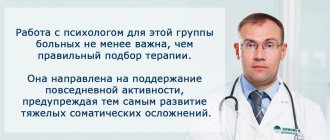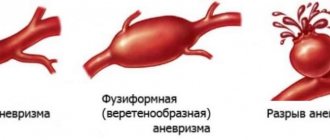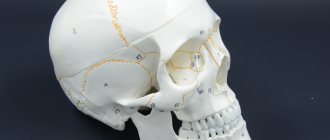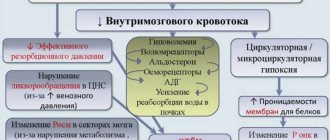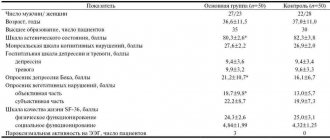The performance of the brain depends on its blood supply. The organ receives much-needed oxygen from the blood. If it is lacking, a person suffers from cognitive impairment. Under conditions of extreme stress that require increased mental activity, natural resources are not enough, and the brain requires replenishment. If there are problems with blood circulation, this need increases many times over.
In such a situation, drugs to increase brain activity help. We'll look at how they work, who should take them, and how to choose the right ones.
Nootropics: what are they?
Nootropics are a group of drugs for improving higher brain functions. It combines:
- medications to normalize cerebral blood supply;
- brain stimulants that enhance mental activity;
- means to compensate for neurological deficits;
- vitamins that increase the resistance of the central nervous system to adverse factors.
They are mistakenly credited with a non-existent effect - the development of intellectual abilities in children and adults. It's a delusion. Taking the pill doesn't make anyone smarter. But if higher mental functions begin to fade, they can be returned to their previous level. To do this, you need to eliminate the cause - overwork, hypoxia or other brain disorders. This is the purpose of nootropic drugs.
List of used literature
1. Klitochenko G.V., Malyuzhinskaya N.V. "The use of nootropic drugs in pediatrics."
2. Pichikov A.A., Popov Yu.V. "Anorexia nervosa in adolescent girls: course options, relapse factors and suicidal risk in the early stages of treatment."
3. Davydova O.N., Boldyrev A.A. "Glutamate receptors in cells of the nervous and immune systems."
4. Vostrikov V.V. "The place of piracetam in modern practical medicine."
5. Shabalov N.P., Skoromets A.A., Shumilina A.P. “Nootropic and neuroprotective drugs in pediatric neurological practice.”
6. Malykh A., Sadaie R. “Piracetam and piracetam-like drugs: from basic science to novel clinical applications to CNS disorders.”
7. Calliauw L., Marchau M. “Clinical trial of piracetam in disorders of consciousness due to head injury.”
8. Rybak V.A., Matokhina N.V. “Nootropic drugs in the clinical practice of a neurologist.”
Share
Share
The principle of action of drugs to improve memory
To increase the activity of the central nervous system, the following therapeutic effects of these drugs are also important:
- acceleration of glucose utilization;
- increased protein synthesis;
- improvement of nucleic acid metabolism;
- impact on the monoaminergic system (activation of the production of adrenaline, dopamine and serotonin);
- stimulating the cholinergic system to avoid cognitive impairment (in particular, decreased declarative memory).
The purpose of taking nootropics is to improve cerebral circulation and normalize metabolic processes in nerve cells. At the same time, the rate of formation of neural connections increases and their number increases. This leads to increased brain activity. That is, against the background of treating disorders, nootropics act as stimulants for the functioning of the organ itself.
DMAE
DMAE is a naturally occurring molecule found in fish. Human studies since the 70s have shown that taking DMAE increases life expectancy.
DMAE is a precursor to the memory molecule acetylcholine and the molecule that is part of cell membranes, phosphatidylethanolamine.
Additional intake of the supplement improves memory functions and increases the “fluidity” of cell membranes. For example, this makes it easier for red blood cells to bend when passing through small capillaries.
DMAE is an antioxidant and is capable of removing the “aging pigment” lipofuscin that accumulates in cells, which interferes with the normal functioning of cells.
DMAE
399 rub.
What does increased brain activity give a person?
Nootropics are called cognitive enhancers. Taking such medications or vitamins enhances learning abilities due to the complex activation of the central nervous system:
- memory improvements;
- increasing concentration;
- enhancing perception;
- ensuring clarity of consciousness;
- preventing mental exhaustion;
- reducing excitability;
- overcoming asthenia (neuropsychic weakness).
Depending on the active substance, additional effects may be observed. Some have a sedative effect, others help get out of depression. There are medications that help regulate sleep and wakefulness.
Brain activity stimulants are often grouped together with neuroprotectors. They protect the organ from the severe consequences of circulatory disorders, prevent cell destruction, and help slow down dementia.
Drug treatment for stroke
A stroke is an acute circulatory disorder in the brain that requires quick help and further long-term treatment. Correctly selected drugs will help save the patient’s life and increase the chances of restoring lost functions (speech, motor).
In an ischemic stroke, part of the brain is deprived of blood supply due to a blood clot formed in a vessel. The following drugs are indicated for patients with this disease:
- At the first signs of acute stroke, antiplatelet drugs are prescribed. The most famous of them is aspirin. In case of intolerance, replace it with Ticlopedine, Dipyridamole.
- To prevent the formation of blood clots and blockage of blood vessels, low-molecular-weight heparins, for example Clexane, are indicated.
- After heparins, treatment with indirect anticoagulants (Sincumar, Warfarin) is continued.
- To increase blood volume and improve its flow to the brain, molecular dextrans (Reopoliglucin) are indicated.
- For high blood pressure, calcium channel blockers and ACE inhibitors are prescribed to prevent recurrent stroke.
- To improve microcirculation, Trental and Curantil are used. For vasodilation - Vinpocetine.
- During the recovery period, nootropic drugs are indicated.
Hemorrhagic stroke is caused by a ruptured blood vessel in the brain and requires different treatment. Often it is necessary to resort to surgical intervention. Drugs prescribed include dextrans to replenish blood volume and medications to lower blood pressure.
Indications for use
Nootropic drugs are prescribed when diagnosing disorders of brain activity. They may be associated with head injuries, circulatory problems, and intoxication. Most often, nootropics are prescribed for:
- oxygen starvation of brain tissue;
- cognitive disorders (memory deterioration, decreased ability to concentrate);
- vegetative-vascular dystonia;
- encephalopathy;
- central nervous system intoxication (including alcohol);
- neuroinfections;
- depression;
- asthenia;
- neuroses.
In these cases we are talking about medications. To increase mental performance, you can get by with a good vitamin complex.
For children and adolescents, nootropics help with attention deficit disorder and delayed intellectual development. For older people, they are a weapon against dementia (including Alzheimer's disease).
What nootropics (list of drugs and their characteristics) are widely used in pediatrics?
First of all, I would like to remind you that nootropics in pediatrics have fairly clear indications for use. These are, first of all, the following conditions: • Prevention and treatment of child retardation in mental, motor and speech (after 3 years) development. • Stimulation of central nervous system functions associated with the processes of learning, concentration, memorization and reproduction of information. • Organic damage to the central nervous system as a result of neuroinfections, traumatic brain injuries, genetic diseases. • Cerebral palsy. • Urinary disorders of neurogenic nature. • Stuttering. • Complex therapy of epilepsy. • Neurotic conditions and asthenia (obsessive-compulsive disorder) • ADHD – attention deficit hyperactivity disorder. Most often, children are prescribed nootropics from the list of so-called true nootropics, which primarily affect the mnestic (memory) and cognitive (cognitive) abilities of a person of any age. These are nootropic drugs such as: • Racetams. • Neuropeptides. • Cholinergic nootropics. • Neuroprotectors. • Activators of amino acids and GABA (gamma-aminobutyric acid). • Antioxidants. Of the Racetams, the most significant and widespread is Piracetam - a drug used by doctors for almost 50 years and being the founder of nootropic drugs, the list of which is constantly expanding and updated. Known under the commercial name nootropil. In children, it is especially effective as a stimulator of speech development, and also helps well with cerebral palsy and mental retardation, during rehabilitation after TBI and GM intoxication, and helps increase learning ability. Available in a wide variety of pharmacological forms - tablets, granules, capsules, syrups, solutions for parenteral administration. Peculiarities of use: not recommended for use in the afternoon.
In childhood, drugs such as: • Cortexin, which is considered the best for children 1 year of life, are also often prescribed. It can be used starting from the first birthday. It has a positive effect on the nervous system, including the peripheral one, counteracts toxic effects, improves blood circulation, and is used in the complex treatment of epilepsy. In addition, cortexin improves memory, increases resistance to stress and is effective when taken by children with developmental delays (psychomotor and speech). Quite popular among students, especially during sessions, to improve memory and assimilate large amounts of information. Cortexin also has positive reviews from parents and pediatricians; it is quite safe, but quite expensive. Available in the form of a lyophilisate (powder dried at sub-zero temperatures). • Semax 0.1% solution is the safest and is produced in the form of nasal drops convenient for use in children. It has virtually no side effects, except for rare and minor irritation of the mucous membrane. It belongs to the peptide series of nootropics and has a positive effect on attention, learning and perception. In addition, it helps restore and adapt the nervous system after anesthesia. In pediatrics, it has proven itself well in the treatment of brain dysfunction in children over 5 years of age. The advantages of Semax include high safety and a convenient release form for use. A relative disadvantage is the need to store the drug in the refrigerator at a temperature not exceeding 8 degrees.
• Cerebrolysin, which is a neuropeptide of animal origin (a concentrate of peptides from the brain of pigs or cattle. It is actively used as an activator of neural metabolism, helps to increase concentration and reduce hyperactivity. Its disadvantage is that it is a relatively expensive drug and is produced only in in the form of injection solutions, and the plus is that this is one of the most effective nootropics for developmental delays in children.Side effects are rare and boil down to individual allergic reactions to the components of the drug, insomnia and, extremely rarely, arrhythmias.
For delayed speech development (DSD), the following nootropics are also effective: • GABA analogues and derivatives (Picamilon, Pantogam), which normalize the conduction of nerve impulses and improve glucose utilization and oxygen consumption in neurons. Being inhibitory mediators, they are effective for hyperactivity and increased excitability of the central nervous system. • Pyritinol drugs (Encephabol, Cerebol), which have a neuroprotective (stabilization of membranes and inhibition of the production of free radicals that destroy the structure of cells) and antihypoxic effects. • Ceraxon is a stimulant of central nervous system activity, containing citicoline, which is responsible for restoring neuronal membranes and their energy supply, as well as reducing the amount of intercellular fluid in the brain and thus providing an anti-edematous effect. It is recommended not only for mental retardation with symptoms of inhibition, but also for autism. To summarize the answer to this question, I would like to say that the choice of nootropic drugs, the list of which, taking into account the new generation drugs, includes more than a hundred items, remains with the pediatrician. Under no circumstances should you prescribe nootropics on your own, even based on the indications indicated in the instructions. Of course, nootropics are quite safe drugs that have a positive effect on the nervous system, but each of them has its own preferential effect and is aimed at different processes in the nervous tissue. By independently prescribing CNS activators to a small patient with hyperactivity, parents can get increased activity and increased excitability in their child, leading him to a nervous breakdown and treatment by a child psychiatrist. To prevent such excesses, the vast majority of nootropics are sold in pharmacies only with a doctor’s prescription. Some of them can be purchased without a prescription, but their list is quite limited. I will dwell on them in more detail at the end of the interview.
Contraindications for use
Nootropics are considered one of the safest medications. There are no absolute contraindications to their use. Although doctors do not recommend using them unless any disorder of brain activity is diagnosed. They are not prescribed to pregnant women and infants.
Some drugs have side effects. Their undesirable appearance may become a relative contraindication for use. These include:
- increased blood pressure;
- dizziness;
- sleep disorder (more often - insomnia, less often - drowsiness during the day);
- motor restlessness;
- nausea;
- skin itching;
- irritation of mucous membranes.
So, if a person has psychomotor agitation, medication for brain activity can only worsen the situation. Not everyone experiences drowsiness. Before you get behind the wheel, you should monitor your condition after taking medications.
Gotu kola
This little-known plant in the CIS countries has remarkable effects: it has an anti-inflammatory effect and has a positive effect on joint health.
Drinking gotu kola improves the condition of the skin, accelerates the healing of wounds and burns, and strengthens joints and ligaments. In addition, the extract has nootropic effects: promotes brain restoration after injuries, strokes, stress; reduces anxiety and other symptoms of depression.
Gotu Kola + Ginkgo biloba
399 rub.
Groups of tools to improve brain function
Piracetam was the world's first nootropic. It was developed back in 1963 as a replacement for psychostimulants, benefiting from the absence of side effects. This substance became the founder of the racetam group, which improves memory.
In the nootropics category you can also find:
- correctors of cerebral circulatory disorders;
- dimethylaminoethanol derivatives, which help absorb oxygen and improve thinking skills;
- derivatives of pyridoxine (vitamin B6), normalizing metabolism in neurons and stabilizing the functioning of the central nervous system;
- neuropeptides that promote the formation of long-term memory.
Neuroprotectors are sometimes identified with nootropics, but there is a difference between them. Neuroprotectors are drugs of mixed action. They have a wider range of effects.
Rating of the best drugs to improve brain function
Despite the large selection of nootropic drugs in pharmacies, among them there are firmly established leaders. First of all, this is the mentioned Piracetam. It is produced in the form of tablets, capsules and injections.
But there are many more good remedies with a similar effect. They differ in active ingredients and dominant effects. The top five, along with Piracetam, includes:
| Glycine | The amino acid of the same name helps to cope with the manifestations of vegetative-vascular dystonia and mental overload. |
| Cavinton | Cerebrovascular corrector vinpocetine, which restores blood circulation and neutralizes the effects of hypoxia. |
| Fenotropil | A psychostimulant that helps improve concentration, improve performance, and is a mild tranquilizer. |
| Semax | A neuropeptide that activates learning processes and helps adapt to a lack of oxygen. |
Calcium channel blockers
These medications are among the most popular among neurologists and therapists. Due to a decrease in the amount of calcium in cell membranes, the vascular walls relax, their lumen expands, and blood flow increases. The amount of nutrients and oxygen reaching the brain also increases. The tone of the veins does not change, which is important for maintaining normal venous outflow. There are a number of proven drugs, as well as new generation drugs.
Which ones are better to choose? The list of the most popular is given in the table.
| Generation | Name of medicine | Group |
| First | Verapamil | Phenylalkylamine derivatives |
| First | Nifedipine | Dihydropyridine derivatives |
| First | Diazem | Benzothiazepine derivatives |
| Second | Isradipin | Benzofurazanil derivatives |
| Second | Plendil | Dihydropyridine derivatives |
Currently, third-generation drugs are being developed that have even fewer side effects and contraindications. The above remedies can also treat arterial hypertension. Vasodilators are contraindicated during pregnancy and lactation.
Vitamins to improve brain function
If no serious disturbances in brain function have been identified, you should not abuse medications. You can solve the problem of increasing concentration or learning ability with the help of vitamins:
- beta-carotene, which protects neurons from premature aging;
- B1, a neuroprotector that supports good memory and clarity of consciousness;
- B6, which supports concentration and prevents depression;
- B9, which is taken to prevent stroke;
- B12, a deficiency of which increases the risk of Alzheimer's disease;
- C, slowing down degenerative processes;
- K, which speeds up the processing of signals entering the brain.
There is no miracle pill that will solve all cognitive problems at once. But correctly identifying the cause of the violations allows you to choose the appropriate remedy for their correction.
Warfarin
"Warfarin" is prescribed to prevent blood clots; this vasodilator slows down blood clotting, being an anticoagulant. This remedy has been used successfully in many countries for a long time. The dosage of Warfarin is determined by the doctor, taking into account the individual characteristics of the individual patient. Often this medicine needs to be taken for a long time, in some cases for life. "Warfarin" is indicated for patients for the prevention of thromboembolic complications in atrial fibrillation, for patients with lesions of the heart valves or with prosthetic heart valves, for the treatment and prevention of strokes and transient ischemic attacks, for the prevention of thrombus formation after operations.
Warfarin
OZON, Russia
Treatment and prevention of deep vein thrombosis and pulmonary embolism, transient ischemic attacks and ischemic stroke.
Secondary prevention of myocardial infarction and prevention of thromboembolic complications after myocardial infarction. Prevention of thromboembolic complications in patients with atrial fibrillation, heart valve disease or prosthetic heart valves. from 45
627
- Like
- Write a review
